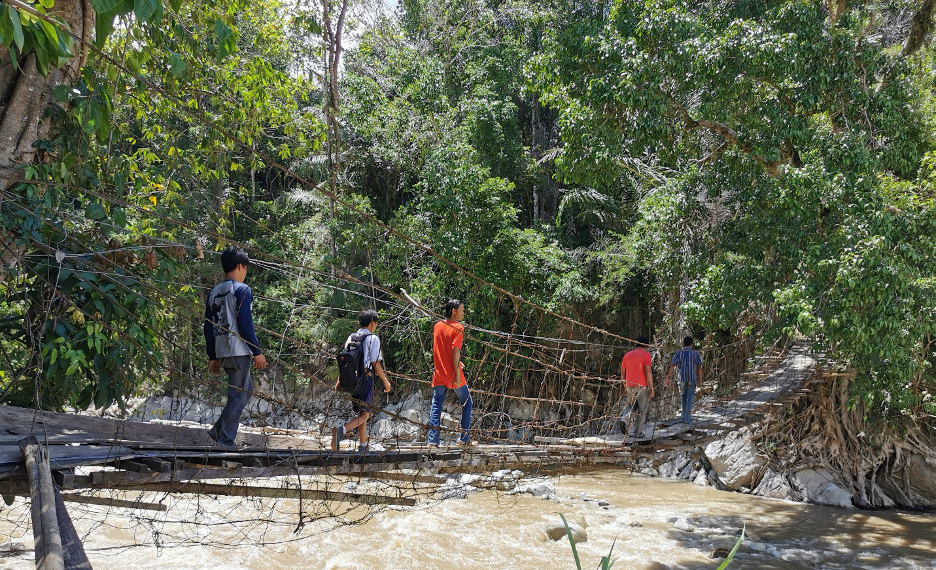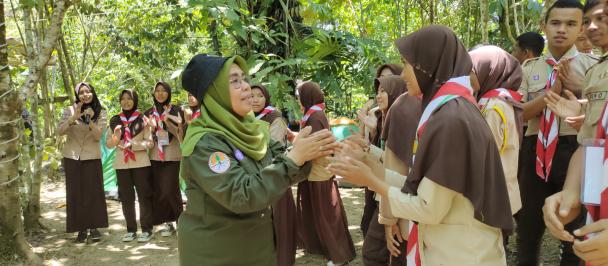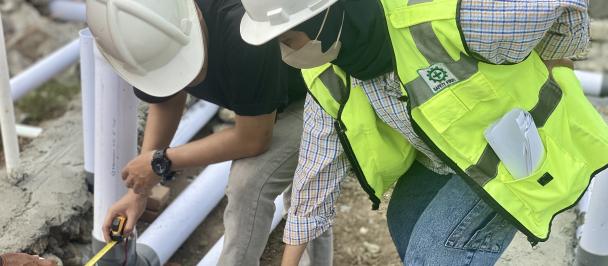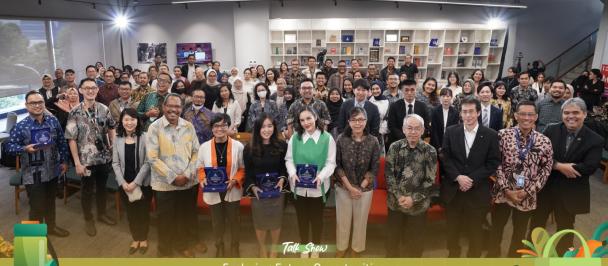Villagers crossing suspensions bridge in Tuva Village. This bridge is the only operational bridge following the 2018 earthquake and 2019 floods.
The collapse of two suspension bridges in quake-hit Kampong Toraja has rubbed salt into the wound for the farming community.
In September 2018, like the rest of villages in Indonesia’s Central Sulawesi, Kampong Toraja was hit by the 7.4 magnitude quake, causing damage to much of the community’s infrastructure.
Since then, villagers have been forced to partially travel on foot to sell their produce in nearby towns. They have also been struggling to get access to critical healthcare.
Markus Buntu has been a farmer in Kampong Toraja since 1977. For years, he has transported his produce – copra, corn and cocoa across the Miu River to the provincial capita Palu on his motorcycle via a suspension bridge. The destruction of two of the main bridges during the earthquake and tsunami of 2018 has forced Markus and his community of farmers to carry their produce to the city on foot. But there is hope in sight. UNDP’s PETRA project has recently completed the design of the new bridge and construction is set to begin in a few weeks, which will restore efficient connectivity.
“I was the first one to set up a home in this neighborhood,” he says. But now there are 20 households here, each holding between four and six hectares of farmland to cultivate corn, cocoa and copra. The crops can also be seen along the main roads in the village. “We rely on dried cocoas and copra. We sell corn, but we also save some for cattle feed,” Markus says.
Before the earthquake, the community relied on the suspension bridges to access healthcare, education and trade in Palu. “Since the bridge collapsed, we have had to spend more money carrying our crops to buyers. One time, we even had to carry a pregnant woman to the hospital in the middle of the night because she was about to give birth.” Fortunately, there was still one bridge left and villagers were able to carry her to the hospital and was able to deliver her baby. It would have been a lot easier to use a motorcycle but the lone bridge that is still in operation cannot bear the weight of vehicles.
UNDP’s PETRA, project has recently completed the design of the new bridge and construction is expected to commence in August on what many consider the “treasure of the Tuva community”.
UNDP is collaborating with YKMI, a national CSO working in Central Sulawesi for post-disaster recovery. YKMI has been working with the Tuva community to rebuild suspension bridges and irrigation canals. The PETRA project works on reconstruction projects via community consultation and has heard the community’s concerns in a series of public meetings. “More than 80 per cent of our economic resources are across the Miu river. This collapsed bridge makes us even harder to transport our harvest,” Bachtiar, the Village Head said..
The reconstruction of Tuva bridge is set to begin in August 2020. “We hope that this bridge can be rebuilt soon. It will help us save more money,” Luther, a Kamong Toraja resident says.
Luther as well as Markus have had to spend more money to transport their harvest to market. They had to spend IDR 100, 000 (approximately USD 8) per laborer to transport 5.8 tonnes of corn per day. 23 laborer have been assisting with this task“ This is low, actually, as the workers are from our community. It would have been much higher if we sought assistance from people outside our village” Luther says.
The reconstruction of Tuva bridge will hep Markus, Luther and their community access the market, health care and other facilities in Tuva. The reconstruction of Tuva bridge is akin to the return of a valuable community asset.
UNDP’s Programme for Earthquake and Tsunami Infrastructure Reconstruction Assistance (PETRA) project is implemented by UNDP with financial support from the Federal Republic of Germany through its development bank, KfW.
-
Writing and photos by Olyvianus P. Dadi Lado
Edited by Ranjit Jose and Suryo Tomi

 Locations
Locations



